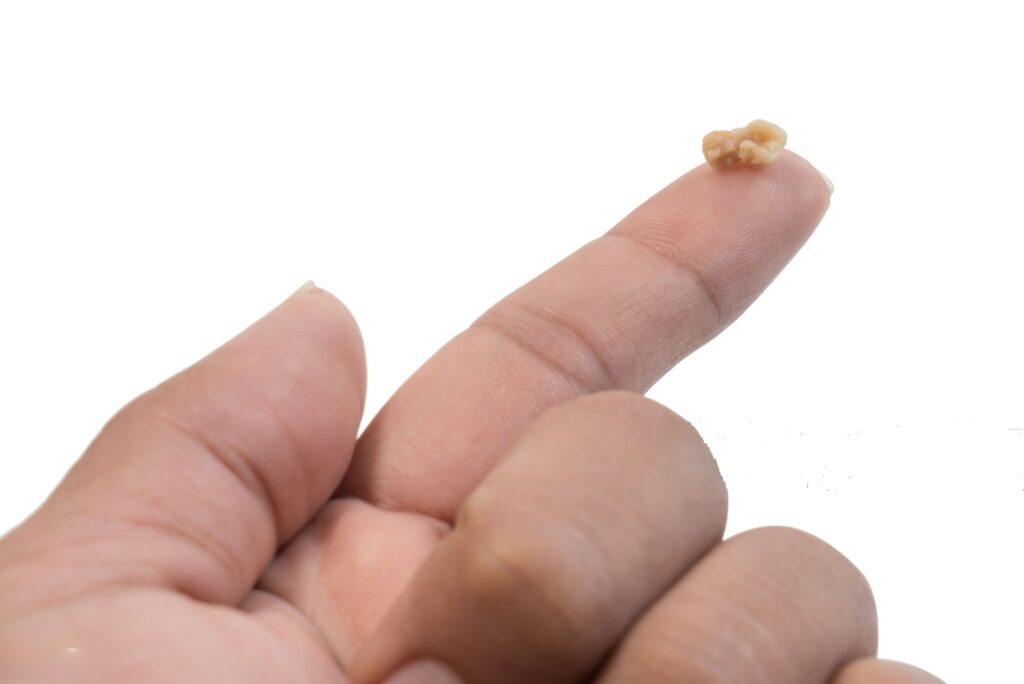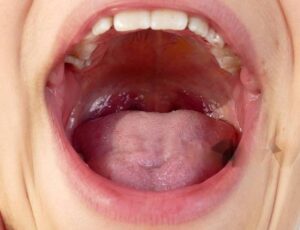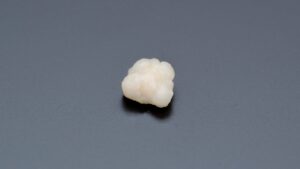Popping hidden tonsil stones has emerged as a widely discussed topic for those seeking relief from tonsilloliths, the medical term for tonsil stones. These small, calcified deposits can form in the crevices of the tonsils at the back of the throat, often unbeknownst to the individual until they cause discomfort or noticeable symptoms. Understanding what tonsil stones are and the intrigue behind popping hidden tonsil stones as a removal method is crucial for anyone dealing with or curious about this common oral health issue. This guide aims to shed light on the essential tips for popping hidden tonsil stones, focusing on both relief and prevention, to help maintain optimal oral hygiene and well-being.
Table of Contents
Toggle- What Are Tonsil Stones?
- Recognizing Tonsil Stones
- The Risks of Popping Tonsil Stones
- Safe Methods for Removing/Popping Hidden Tonsil Stones
- Professional Removal of Tonsil Stones
- Prevention: Keeping Tonsil Stones at Bay
- Dietary Tips and Lifestyle Changes
- FAQs on Popping Hidden Tonsil Stones
- Home Remedies vs. Professional Advice
- The Psychological Impact of Tonsil Stones
- Conclusion
- Words of Encouragement
- Additional Resources
What Are Tonsil Stones?

Tonsil stones, scientifically known as tonsilloliths, are small, hard deposits that form within the tonsil crypts. These calcifications are comprised of materials like dead cells, mucus, bacteria, and food particles. Over time, these elements compact into a stone-like formation, often leading to discomfort and a host of oral health issues.
The Significance of “Hidden” Tonsil Stones
Popping Hidden Tonsil Stones becomes a topic of interest due to the nature of these formations. While some tonsil stones are visible on the surface of the tonsils, others remain hidden within the folds, evading detection. These hidden stones can be particularly problematic, as they might not be immediately noticeable, yet they contribute to chronic bad breath, sore throats, and a feeling of something being stuck in the throat.
Recognizing Tonsil Stones
Identifying the presence of tonsil stones, especially the hidden ones, can be a precursor to achieving relief from the discomfort they cause. Here are symptoms that might indicate the presence of Popping Hidden Tonsil Stones:
Symptoms of Hidden Tonsil Stones
- Bad Breath: One of the hallmark signs of tonsil stones is persistent bad breath, caused by the bacteria harbored in the stones.
- Sore Throat: Having a sore throat without any other symptoms of illness can be a sign that tonsil stones are present.
- Trouble Swallowing: The sensation that something is stuck at the back of your throat or difficulty swallowing can indicate tonsil stones.
- Ear Pain: Because of shared nerve pathways, tonsil stones can sometimes cause a sensation of pain in the ear.
Impact on Oral Health and Well-being

Tonsil stones can affect more than just your physical health; they can also impact your emotional and social well-being. The persistent bad breath associated with tonsil stones can lead to embarrassment and social anxiety, while the discomfort can distract from daily activities.
Understanding these signs is crucial for early detection and management of tonsil stones. Early recognition allows for timely intervention, either through home remedies or professional medical advice, to remove these stones and mitigate their impact on your life.
The Risks of Popping Tonsil Stones
While the removal of tonsil stones can provide relief from symptoms, it’s vital to understand the potential risks involved in attempting to pop them. This knowledge ensures that any efforts to remove Popping Hidden Tonsil Stones are done safely and effectively.
Potential Risks Associated with Tonsil Stone Removal
- Infection: Incorrect removal techniques can introduce bacteria into the tonsils or damage the delicate tissues, leading to infection.
- Bleeding: Aggressive attempts to dislodge tonsil stones can cause bleeding, leading to further complications.
- Irritation: Probing the tonsils can irritate them, exacerbating symptoms instead of alleviating them.
Safer Alternatives
Understanding the risks involved with manually popping hidden tonsil stones emphasizes the need for safer, more controlled methods of removal.
By approaching the removal process with caution and informed techniques, individuals can avoid the pitfalls associated with improper removal methods. It’s also crucial to know when professional medical intervention is necessary for the safe extraction of tonsil stones.
Safe Methods for Removing/Popping Hidden Tonsil Stones
Addressing Popping Hidden Tonsil Stones safely is paramount to avoid the risks outlined previously. Here are steps and tools that can assist in the safe removal of tonsil stones:
Step-by-Step Guide to Safely Popping Hidden Tonsil Stones
- Good Oral Hygiene: Regular brushing, flossing, and gargling with saltwater can help loosen and remove small tonsil stones.
- Gargle with Saltwater: A saltwater gargle can help ease tonsil stone removal by disinfecting the area and loosening the stones.
- Cotton Swabs: Gently using a moistened cotton swab can help push the stone out of the crypts. Ensure the swab is soft, and apply only light pressure to avoid irritation.
- Oral Irrigators: Using an oral irrigator on a low setting can help flush out stones without causing harm to the tonsils.
Tools and Techniques for Effective Removal
- Saltwater Solution: Mix a teaspoon of salt in a cup of warm water and gargle to loosen tonsil stones and reduce bacterial load.
- Cotton Swabs: Soft, sterile cotton swabs can gently coax stones from their hiding spots.
- Oral Irrigators: Devices like water flossers can be effective, but should be used with caution to avoid damaging the tonsils.
These methods can provide a non-invasive approach to popping hidden tonsil stones, reducing the need for professional intervention. However, it’s important to proceed with caution and stop if any discomfort or bleeding occurs.
Professional Removal of Tonsil Stones

There are situations where Popping Hidden Tonsil Stones at home might not be possible or safe. In such cases, seeking professional medical advice and assistance becomes imperative. Here’s when to consider it:
When to See a Healthcare Professional
- Persistent Tonsil Stones: If tonsil stones recur frequently despite home management, professional evaluation is recommended.
- Difficulty Swallowing or Breathing: Large tonsil stones that cause discomfort or interfere with normal swallowing or breathing should be professionally assessed.
- Infection Signs: Symptoms like fever, significant pain, or tonsil swelling suggest an infection that needs medical intervention.
What to Expect During Professional Removal
- Assessment: A healthcare provider will examine your throat and may use imaging tests to assess the size and location of the tonsil stones.
- Manual Removal: Using sterile tools, a professional can safely remove tonsil stones that are difficult to reach or resist home removal methods.
- Medical Treatment: If infections are present or if there’s significant tonsil tissue damage, antibiotics or other treatments may be prescribed.
Opting for professional removal ensures that the process is safe, effective, and addresses any underlying issues contributing to the formation of tonsil stones. This approach can provide relief without the risks associated with at-home popping attempts.
Prevention: Keeping Tonsil Stones at Bay

Preventing the formation of Hidden Tonsil Stones begins with understanding the factors that contribute to their development. Implementing daily oral hygiene practices and making certain dietary changes can significantly reduce the risk.
Daily Oral Hygiene Practices
- Brush and Floss Regularly: Brushing twice a day and flossing daily can remove food particles and bacteria that could contribute to tonsil stone formation.
- Gargle with Saltwater: Regular gargling can help cleanse the tonsils and prevent the accumulation of debris in the tonsillar crypts.
- Stay Hydrated: Drinking plenty of water helps keep the mouth moist and discourages bacterial growth.
Dietary Tips and Lifestyle Changes
- Reduce Dairy Intake: Dairy products can contribute to the buildup of mucus and calcium, both of which can lead to the formation of tonsil stones.
- Avoid Sugary Foods and Drinks: Sugar fosters bacterial growth, increasing the risk of tonsil stones.
- Quit Smoking: Smoking can dry out the mouth and throat, creating an environment conducive to the formation of tonsil stones.
By adhering to these preventive measures, individuals can significantly lower their chances of developing tonsil stones. Maintaining good oral hygiene and making mindful lifestyle choices are key to keeping the tonsils free of stones.
FAQs on Popping Hidden Tonsil Stones
Here are answers to frequently asked questions about Popping Hidden Tonsil Stones:
Can popping hidden tonsil stones cause infections?
Yes, improperly removing tonsil stones can introduce bacteria into the tonsils or damage the delicate tissue, leading to infection. It’s crucial to use safe methods or seek professional help.
Are there any long-term solutions for recurrent tonsil stones?
Long-term solutions include maintaining rigorous oral hygiene, making dietary adjustments, and in some cases, consulting with a healthcare provider about potential surgical options like tonsillectomy for chronic cases.
How often should I check for hidden tonsil stones?
It’s wise to check for tonsil stones regularly, especially if you’ve experienced them before. Monthly self-examinations using a flashlight can help you spot and address tonsil stones before they become problematic.
Is it normal for tonsil stones to have a foul smell?
Yes, tonsil stones often have an unpleasant odor due to the presence of bacteria and decomposing food particles. This is one of the reasons they’re associated with bad breath.
By addressing these frequently asked questions, we aim to demystify the process of Popping Hidden Tonsil Stones and encourage safe and effective management strategies.
Home Remedies vs. Professional Advice
The debate between using home remedies and seeking professional advice for Popping Hidden Tonsil Stones often depends on the severity and recurrence of the condition.
Effectiveness of Home Remedies
- Home Remedies: For many, home remedies such as saltwater gargles, cotton swabs, and oral irrigators offer a first line of defense. These methods can be effective for small, accessible tonsil stones, providing relief and preventing further growth.
- Limitations: However, home remedies have their limitations, especially for stones that are deeply embedded or recurrent, posing risks of irritation or infection if not done correctly.
When to Seek Professional Advice
- Professional Advice: Professional medical advice becomes crucial when home remedies prove ineffective or when tonsil stones recur frequently, indicating a potentially deeper issue.
- Benefits: Healthcare professionals can offer more sophisticated treatments, including surgical options for chronic cases, ensuring safe and effective removal while minimizing the risk of complications.
Decision Making
Deciding between home remedies and professional advice should be based on the severity of the symptoms, the effectiveness of previous treatments, and the risk of potential complications. Always err on the side of caution and consult us if you’re unsure or if the situation worsens.
The Psychological Impact of Tonsil Stones
The journey of managing and popping hidden tonsil stones extends beyond physical discomfort, touching on the emotional and social realms. The presence of tonsil stones can lead to embarrassment, social anxiety, and a diminished sense of well-being, primarily due to symptoms like bad breath.
Emotional and Social Challenges
- Embarrassment: The fear of bad breath can lead to self-consciousness and embarrassment in social situations.
- Anxiety: Concerns over social interactions and potential embarrassment can escalate into social anxiety.
- Isolation: To avoid embarrassment, some individuals may isolate themselves, impacting their social life and mental health.
Coping Strategies
- Open Communication: Discussing the issue with trusted friends or family can provide support and reduce feelings of isolation.
- Professional Help: Consulting with healthcare providers not only for the physical removal of tonsil stones but also for advice on managing the psychological impact.
- Self-Care: Engaging in stress-reducing activities and practicing good oral hygiene can improve overall well-being and confidence.
Addressing the psychological aspects of Popping Hidden Tonsil Stones is as crucial as the physical management of the condition. Recognizing and dealing with the emotional impact fosters a more comprehensive approach to well-being.
Conclusion

Throughout this guide, we’ve explored the multifaceted approach to Popping Hidden Tonsil Stones, from understanding the formation of tonsil stones to recognizing symptoms, assessing risks, and exploring safe removal methods. We’ve compared home remedies to professional advice and touched upon the psychological impacts, providing a holistic view of managing this common yet often misunderstood condition.
Key Takeaways
- Recognition and Safe Removal: Identifying symptoms early and employing safe removal techniques can mitigate discomfort and prevent complications.
- Professional Care: Seeking professional advice is essential when home remedies prove ineffective or when tonsil stones recur frequently.
- Prevention is Key: Regular oral hygiene practices and lifestyle adjustments form the cornerstone of preventing tonsil stone formation.
- Addressing Psychological Impact: Understanding and addressing the social and emotional challenges associated with tonsil stones are crucial for comprehensive care.
Words of Encouragement
For those dealing with Popping Hidden Tonsil Stones, remember, you’re not alone. With the right knowledge and support, managing and even preventing tonsil stones is achievable. Prioritize your oral hygiene, don’t hesitate to seek professional advice, and above all, take care of your emotional well-being.
Moving Forward
Embrace these guidelines as a starting point towards better oral health and overall well-being. Stay informed, stay supported, and remember, every step towards understanding and addressing this condition is a step towards a healthier, more confident you.
Additional Resources
- Instructional videos on safely removing tonsil stones
- Further reading on oral health and tonsil stone prevention
SEE ALSO:
